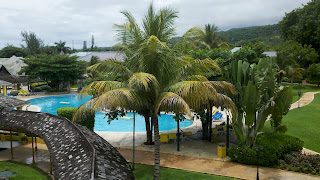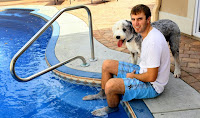August 5th 2011 marks five years to go before Rio de Janeiro hosts South America’s first Olympics and golf returns to sports’ biggest stage for the first time since 1904. Tim Maitland looks at how the sport is evolving in Brazil as 2016 inches nearer.
From Rio de Janeiro’s perspective, the final piece of the Olympic jigsaw was put into place in June when, during the IOC Coordination Commission’s visit, the decision to build a new course in Barra da Tijuca, rather than to refashion the nearby Itanhanga Golf Club, was made. For the Rio 2016 Organising Committee it meant that the venue master plan was complete.
With the five-years-to-go point upon us, it gives golf fans a clearer picture of what golf in the Olympics will be like, with the International Golf Federation still working on the qualification premise it presented to the Olympic family when it successfully made its bid for inclusion in 2009: the top 15 men and women in the world rankings (with a limit of four per country) will be there, with the rest made up by working down the rankings with a maximum of two players per country until the sixty-player field is filled.
 |
| 2016 Olympics in Rio |
Concerns about whether all of the top players will take their places in the field in 2016 are frequent and, now at least, may seem relevant. One suspects that will be a moot point by the time the Games arrive for the simple reason that the entire multi-billion dollar global golf industry – players, tours, the International Golf Federation, golf courses and the golf apparel and equipment brands – all need the injection of renewed interest a successful Olympics will provide, especially in the wake of the Credit Crunch.
So what will Olympic status do for golf in Brazil? Well, just as for the golf world in general, the opportunity is far greater than two four-round Olympic events; it’s already put golf into a whole new stratosphere of Brazilian sport.
“After the IOC decided golf will enter in the Olympic Games, things have changed completely in Brazil,” says Rachid Orra, the President of the South American Golf Federation (the Federacion Sudamericana de Golf) and of the Brazilian Golf Confederation (the Confederacao Brasileira de Golfe).
“Golf in Brazil was growing steadily every year, but now with this new opportunity and with golf returning to the Olympics here in Rio de Janeiro, things are changing dramatically. Even the Brazilian government is interested in helping us develop golf in Brazil. It’s an opportunity that we have to take very seriously in order to take profit… to give big steps in the development of golf. The investment in money is not yet significant, but I’m sure this will grow very fast in the future.”
Hosting two successful tournaments is of paramount importance for Rio and Brazil but, as Brazil’s former LPGA player Candy Hannemann puts it, that is just part of a far bigger aim.
“It’s a project. Our goal is not just the 2016 Olympics. It is “how can we help the 2016 Olympics kick-start more of a golf tradition in the country? And then how can we go on from there?” I think the project is more than just 2016,” says the 32-year-old Hannemann, who played for five years on the LPGA until a wrist injury forced her off the tour in 2008.
Things are already changing…starting with attitudes. That’s beautifully summed up by another female professional, Maria Priscila Iida. A third-generation Japanese-Brazilian, Iida talks of moving to Japan eight years ago without a word of Japanese and experiencing a vastly different rural world to the megacities of Tokyo, Osaka and Nagoya that she had envisaged. However her tone of incredulity is just as strong when she describes coming back for the first time in six years to play the 2010 HSBC LPGA Brasil Cup.
“I had culture shock backwards. Everything was different. There are so many celebrities playing golf right now and you see it in the magazines. It is like, “What is this? Everybody knows about golf now?” I played with a Brazilian actor last year and learned that Formula 1 driver Rubens Barrichello takes lessons with my ex-coach,” explains the 32-year-old Iida, who played with Hannemann in Brazil’s junior national team before either reached their teens.
“The way I hear things it’s becoming much bigger. You can’t count the golf courses anymore; there are so many. They’re golf courses one here and one there. It’s bigger and it’s growing,” she adds.
Rio’s Dilemma
Rio’s challenge is that the Japeri Golfe Clube, the only public facility in the entire city, it is losing two of its nine holes because of road expansions prior to the Olympics. The other two golf courses, Itanhanga Golf Club and Gavea Golf and Country Club, are the high-end private members facilities.
“It’s a Catch 22!” says Candy Hannemann.
“It’s like the chicken and the egg story. Without the egg you don’t have the chicken, without the chicken you don’t have the egg,” echoes Enio Ribeiro of Brasil1, the biggest of the country’s sports marketing companies involved in the golf industry.
“There needs to be people playing for somebody to invest in it, but nobody will play unless there is a place to play,” Hannemann continues.
“Here the investment needs to come with a leap of faith; a belief that the game’s going to grow and be marketed in a way that will bring the game to the mass, because that’s when golf becomes big. We could have thousands of people out there with the potential to be PGA or LPGA golfers but we don’t know they have the talent because they don’t have the access to it,” she points out.
Right across the board in Rio there’s a consensus that the issue of accessibility to the sport needs to be solved if golf is going to benefit from the Olympics.
“The most important thing is the facilities. That’s simple math. Brazil has 200 million people and only 25,000 golfers. Argentina has 50 million people and 200,000 golfers. Because of the economy we definitely have around 10 million people that could play golf. What we need to do is have facilities that can allow them to try it,” says Ribeiro.
“We need some big magic…not magic…we have to work harder,” adds Rachid Orra.
“It would be easier if we had a lot of public courses to put a lot of people from schools directly into playing golf, but the Brazilian reality is not like this so we have to work 10 times harder than in America for instance. We need much more driving ranges here. Brazil has a lot of land. The major new courses are the resorts, the hotels further out of the cities. In the Northeast of Brazil, the greater part of the new hotels in Brazil are planning golf courses. Tourists like to play golf in Brazil; it’s an economic need, which is good for golf in Brazil.”
The good news from Rio’s point of view is that, with almost every major stakeholder in golf engaged in the process of preparing for the Rio Games, help is more available than it has ever been in finding the fix to the Catch 22 issue.
“Everyone from here, that’s what they want to talk about: every single one of them. It’s a vicious cycle that we have to figure out how to break, and we can. It’s more about awareness,” says Jane Geddes, a two-time major champion and chairman of the International Golf Federation, during a short break between meetings arranged for her trip to the HSBC event.
Thriving Economy
Historically, the kind of investment golf needs has been an issue in Brazil where spiraling inflation prohibited long-term projects, but since 2000 the number of golfers has increased from 6,000 in that year, stabilising in more recent years at around 25,000. The number of courses has increased too in those 10 years, up nearly 25% to 110, while another 30 are under construction, but as Rachid Orra mentioned, some of that growth is far away in sparsely populated states like Bahia and Pernambuco catering only for European tourists a surprisingly short six-hour flight away.
The fact that this development is happening at all is a product of a period of growth that has seen Brazil develop into one of the world’s top 10 economies by gross domestic product.
“The economy in Brazil for the past 10 or 15 years has really been a stable economy and one where you see significant amount of foreign investment for a variety of different projects. One of the largest offshore oil finds in recent history, the Topi oil field, is offshore of Rio so there’s a lot of investment taking place in the oil and gas industry in and around Rio. Similarly in other parts of Brazil; investments in agriculture, investments in other industries are taking place,” explains David Kotheimer, Vice President of HSBC Bank Brasil.
“The economics are there. The financing capability is there. The economy in Brazil is there. From a demographic perspective, you see more and more people improving their socio-economic condition year-on-year and that’s predicted to continue over the next 30 years. The prosperity in Brazil is continuing to increase. The stability, you’ve had that in the Brazilian economy for a long time now and that’s why HSBC is here; we’re helping with that growth and we’re making those types of loans to companies that need to invest. That will continue on. I think the stability is there and the financing is there; it’s having a sufficient demand for that type of investment in a driving range or golf course,” Kotheimer adds.
So the financial climate ripe, and the socio-economics suggest a significant sector of Brazil’s population are in the process of moving into the level of wealth where golf becomes aspirational. Growing and meeting that demand, which you could break down as a combination of awareness and opportunity, stand hand-in-hand as Rio’s big obstacles.
The second part of Tim Maitland's article, Golf and Brazil's International Olympic Growth Potential, will be posted tomorrow is now posted on Golf for Beginners blog.
Photo credit: StanfordReview.org
Voice your opinion on Twitter @Golf4Beginners
Friend Golf for Beginners on Facebook
 When I first received a press invitation to visit Breezes Runaway Bay in Jamaica as part of a girl's golf getaway, I must admit I jumped at the chance! Only a three-hour Air Jamaica flight to the beachfront at a super-inclusive resort on the Caribbean Sea, walking upon some of the finest sand, being pampered with manicure, pedicure, spa treatment, and playing golf? It was a dream come true...and a birthday wish!
When I first received a press invitation to visit Breezes Runaway Bay in Jamaica as part of a girl's golf getaway, I must admit I jumped at the chance! Only a three-hour Air Jamaica flight to the beachfront at a super-inclusive resort on the Caribbean Sea, walking upon some of the finest sand, being pampered with manicure, pedicure, spa treatment, and playing golf? It was a dream come true...and a birthday wish! There are several room variations throughout Breezes Runaway Bay with different amenities: my room was slightly larger than the standard with terrific beach views. Some travelers might prefer the lush garden and pool view while others may enjoy a suite outfitted with a plunge pool; the choice is yours.
There are several room variations throughout Breezes Runaway Bay with different amenities: my room was slightly larger than the standard with terrific beach views. Some travelers might prefer the lush garden and pool view while others may enjoy a suite outfitted with a plunge pool; the choice is yours.


























